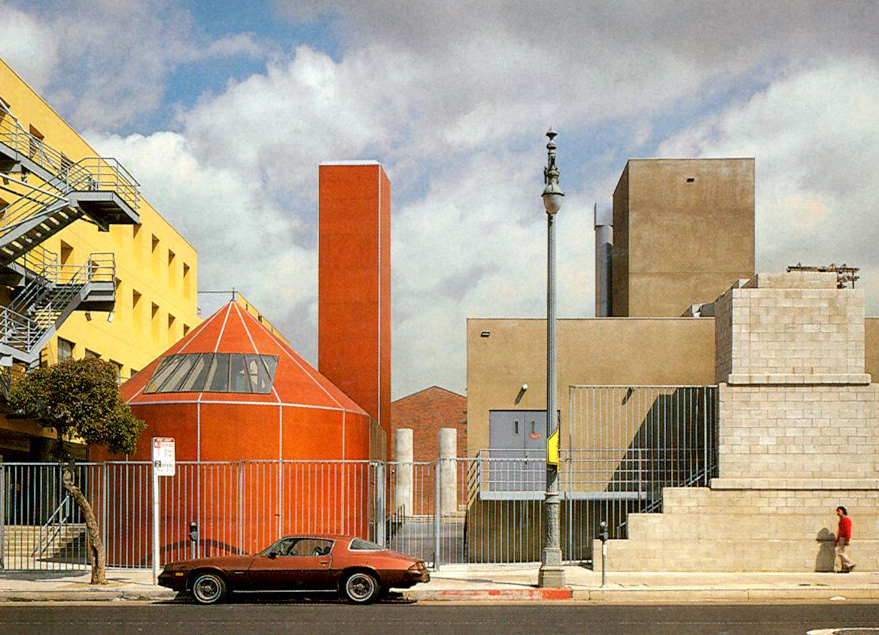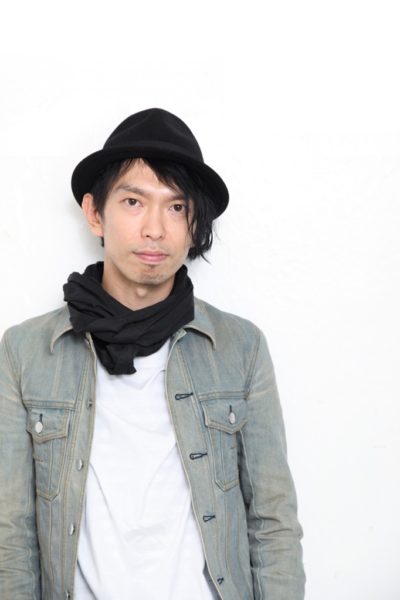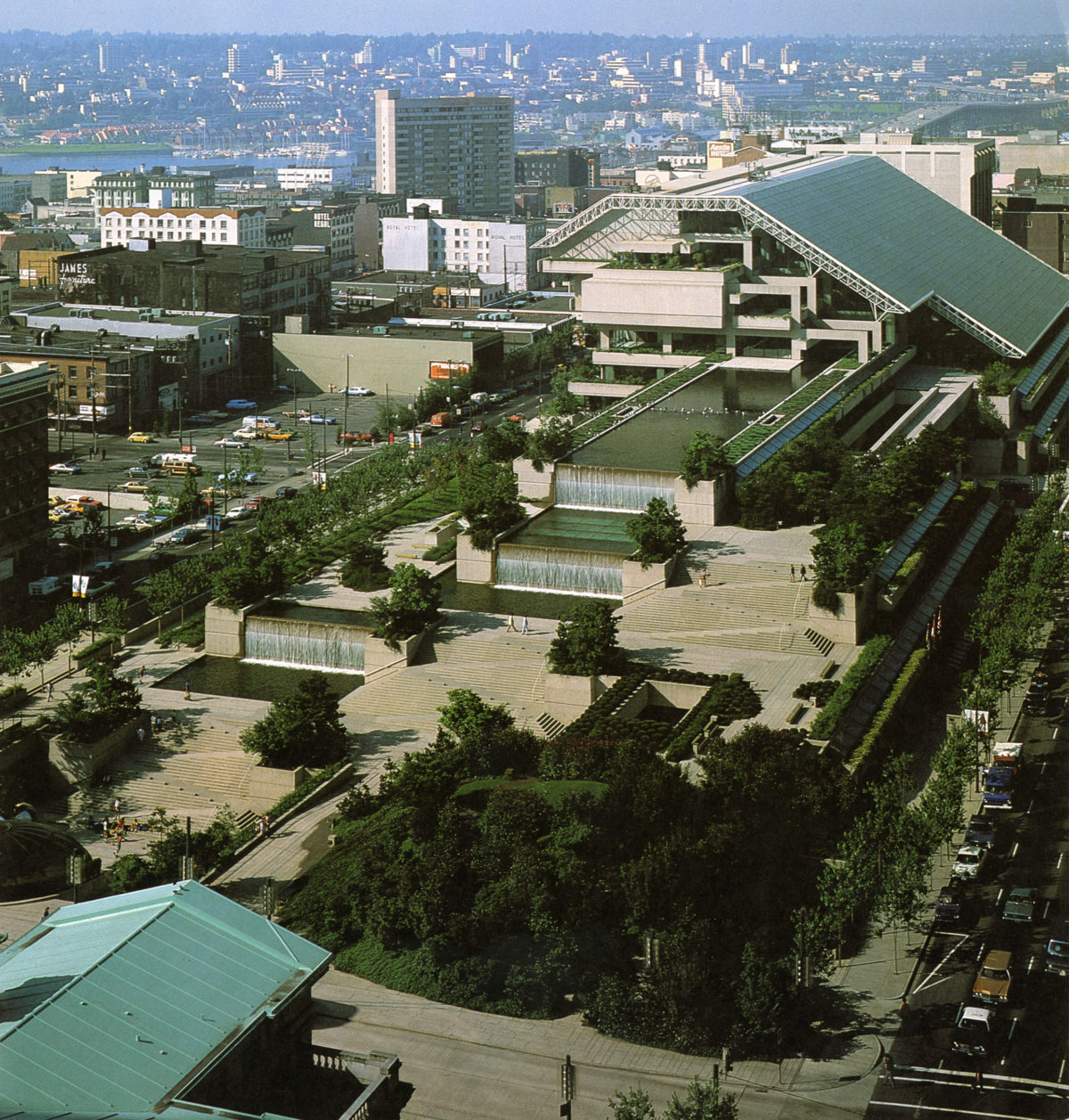Core Studio Public Lecture: Virgil Abloh, “Insert Complicated Title Here”
Virgil Abloh (Rockford, IL 1980) is an architect, engineer, creative director, and designer. After earning a degree in Civil Engineering from the University of Wisconsin Madison, he completed a Master´s degree in Architecture at the Illinois Institute of Technology. It was here that he learned not only about design principles but also about the concept of collaborative working. He studied a curriculum devised by Mies van der Rohe on a campus van der Rohe had designed. After completing his degree, Abloh soon took on the role as a creative director for Kanye West and for West´s creative think tank “Donda“.
Throughout Virgil Abloh’s career, he has received numerous awards in the realms of art and design. Off-White c/o Virgil Abloh™ began in 2012 as an art project titled PYREX VISION. In 2013, Off-White c/o Virgil Abloh™ was introduced as a seasonal men’s and women’s fashion brand, which has grown to include the production of furniture designed by Abloh. In 2015, Off-White™ was one of eight finalists for the LVMH Prize in Paris. In 2016, he was inducted into the BOF 500 “The People Shaping The Global Fashion Industry” List. In the same year, he was one of five nominees for the category of International Urban Luxury Brand at The British Fashion Awards. In 2017, Abloh was one of five nominees for the category of Swarovski Award for Emerging Talent at The CFDA Awards. Additionally, in 2017, Abloh was selected as a special guest to show his Spring Summer 2018 Men’s OFF-WHITE c/o VIRGIL ABLOH™ Collection in Florence, Italy during Pitti Immagine Uomo 92. In 2019, Abloh’s work will be the subject of a focused retrospective at the Museum of Contemporary Art, Chicago, where he will show new work alongside previously unseen works from his past.
This event is free and open to the public. No tickets are required; guests will be asked to line up and will be seated on a first come first served basis, with priority for GSD students, faculty, and staff.
Eduard Sekler Memorial Lecture: Jorge Silvetti, “TYPE: Architecture’s elusive obsession and the rituals of an impasse”
Please join us for a lecture by Jorge S. Silvetti, Nelson Robinson, Jr. Professor of Architecture at the GSD. Mohsen Mostafavi, Dean and Alexander and Victoria Wiley Professor of Design, will give an introduction to Silvetti as well as to Eduard Sekler, Harvard University’s Osgood Hooker Professor of Visual Art Emeritus and Professor of Architecture Emeritus at the Harvard Graduate School of Design, who passed away this past spring at the age of 96. Following Silvetti’s talk he will be joined by Toshiko Mori, Robert P. Hubbard Professor in the Practice of Architecture at the GSD for a conversation on the parallels between Sekler and Silvetti’s contributions to the GSD and to the wider university.
Jorge S. Silvetti is the Nelson Robinson, Jr. Professor of Architecture at the Harvard University Graduate School of Design where he has taught since 1975. He was chairman of the Architecture Department from 1995-2002. He teaches design studios (that have included The National Archives of Argentina, A Project Along the River Bilbao La Ria de Bilbao, La Reserva Ecologia of Buenos Aires, and Cordoba) and lectures on history, contemporary theory, and criticism (Architectural History I: Buildings, Texts, and Contexts from Antiquity through the 17th Century).
Since 1986, Silvetti has directed a number of research programs, including one on the urbanism and architecture of Sicily, which won a Progressive Architecture award and made him the first designer to win in all P/A award categories. Other research programs include “Buenos Aires 2000,” on the future of public spaces in the changing Latin American metropolis, and “The ria de Bilbao,” on the future development of this formerly industrial city in northern Spain. Silvetti has written on architectural theory, and his design work has been exhibited in museums and galleries worldwide. In 1986, he was awarded the Rome Prize of the American Academy in Rome. Since 1996, he has served as a juror for the Pritzker Architectural Prize, and in 2000 he became a juror for the Mies van der Rohe Prize for Latin American Architecture. Silvetti received the Dipl Arch from the Universidad de Buenos Aires and the MArch from the University of California at Berkeley.
His architecture firm, Machado and Silvetti Associates, was founded in 1974 and has received numerous honors for design projects, including three awards from the American Institute of Architects, nine Progressive Architecture awards and citations, seven Boston Society of Architects awards, and eight design awards from the New England AIA chapter. In 1991, the firm was given the First Award in Architecture by the American Academy of Arts and Letters. The firm’s notable projects include work at Princeton University, Harvard University, Rice University, Arizona State University, the University of Arkansas, the University of Utah, the American University of Beirut, as well as a public library branch in Boston, a private development in Boston, and a new center of comparative archaeology at the Getty Villa in Malibu, California.
Eduard Franz Sekler, Harvard University’s Osgood Hooker Professor of Visual Art Emeritus and Professor of Architecture Emeritus at the Harvard Graduate School of Design, passed away last week at the age of 96. An architect and historian of architecture, Professor Sekler first came to Harvard in 1953, as a Fulbright Scholar. Two years later, Graduate School of Design Dean Josep Lluis Sert invited him to join the GSD faculty. From 1966 to 1976, he served as the first director of the Carpenter Center. He co-founded Harvard’s Visual and Environmental Studies (VES) department in 1968, alongside the late Albert Szabo. All told, Professor Sekler served on the Harvard University faculty for over 50 years.
A native of Vienna, Professor Sekler received professional training in architecture at the Vienna University of Technology before moving to London to study under Rudolf Wittkower at the School of Planning and Regional Research. He graduated with a PhD in the history of art from London University’s Warburg Institute in 1948, and came to the United States as a Fulbright Fellow in 1953. Among his many contributions to Harvard, Professor Sekler co-founded the University’s Visual and Environmental Studies department in 1968.
A prolific writer, Professor Sekler authored, among other publications, Wren and His Place in European Architecture (1956); Research and Criticism in Architecture (1957); and co-authored with William Curtis Le Corbusier at Work: The Genesis of the Carpenter Center for the Visual Arts (1978). He was the recipient of numerous grants and awards throughout his career, including a Guggenheim Fellowship for the morphological study of selected historic urban spaces in Europe and Asia.
In addition to his academic pursuits, Professor Sekler was a passionate advocate for the preservation of cultural and architectural sites around the world, and worked with UNESCO on a number of projects. He was particularly dedicated to the conservation of Nepal’s Kathmandu Valley after first visiting the region in 1962. Ten years later he led the international UNESCO team for the “Masterplan for the Preservation of the Cultural Heritage of the Kathmandu Valley,” and in 1991 he founded the Kathmandu Valley Preservation Trust (KVPT), an organization dedicated to safeguarding the built heritage of the region.
Toshiko Mori is the Robert P. Hubbard Professor in the Practice of Architecture at Harvard University Graduate School of Design and was chair of the Department of Architecture from 2002 to 2008. She is principal of Toshiko Mori Architect, which she established in 1981 in New York City. Mori taught at the Cooper Union School of Architecture from 1983, until joining the Harvard GSD faculty with tenure in 1995. She has been a visiting faculty member at Columbia University and Yale University, where she was the Eero Saarinen Visiting Professor in 1992. Mori has taught courses on the tectonics of textiles, materials and fabrication methods in architecture, structural innovations, and the role of architects as agents of change in a global context. Her recent studio classes have partnered with international non-profits to develop community center and performing arts center prototypes.
Toshiko Mori Architect’s current work includes public New York City theater and library projects, a park visitor center in the Bronx, the Hudson Yard Park and Boulevard, and subway canopies. Mori designed institutional projects for Brown University and Syracuse University, and is part of the design team for New York University’s masterplan. She also designed the award winning Visitor Center at Frank Lloyd Wright’s Darwin D. Martin House compound in Buffalo, NY, as well as the Center of Excellence in Environmental and Energy Systems for Syracuse University. Residential projects include work in Maine, Massachusetts, New York, Mongolia and Taiwan.
Mori’s strong research-based approach to design has been commended in invitations to lectures and conferences around the world. As a member and former-chair of the World Economic Forum’s Global Agenda Council on Design, Mori has participated in sessions to discuss scarcity-driven design, the future of cities and urban information systems, design related to olfactory sensation and experience, and the role of the arts in improving communities. She has participated in international symposia and conferences, including panels held at the MoMA, Guggenheim Museum, and the G1 Summit in Japan. In 2010, Mori was selected to speak at the annual Women of Architecture lecture series at the National Building Museum. She has lectured at universities across the country and around the world.
Mori has received numerous awards and her work has been widely exhibited and published. In 2003 Mori was awarded the Cooper Union Inaugural John Hejduk Award. In 2005, she received the Academy Award in Architecture from the American Academy of Arts and Letters, and the Medal of Honor from the AIA New York Chapter. Her work was exhibited in the Cooper-Hewitt National Design Museum’s “Design Life Now: National Design Triennial 2006” and at the Guggenheim Museum. She has contributed to various publications, and edited a volume on material and fabrication research, Immaterial/Ultramaterial. A monograph of her work, Toshiko Mori Architect, was published by Monacelli Press.
In 2009, she established a think tank, VisionArc, which connects local and global issues to mobilize design initiatives for a more sustainable future. Mori presented this research at the Singapore Icsid World Design Conference and the Bilbao Bizkaia B Award Design Festival. The research aims to locate new opportunities to embed design into higher channels and broader fields of practice.
Patricia Urquiola, Margaret McCurry Lectureship in the Design Arts
Patricia Urquiola studied architecture and design at Madrid Polytechnic and Milan Polytechnic, graduating with Achille Castiglioni. She worked with Vico Magistretti and later as head of design at Lissoni Associati. She has received the Gold Medal of the Arts and the Order of Isabel the Catholic by His Majesty The King of Spain Juan Carlos I. Her work is displayed in various museums and collections, such as MoMA in New York, Musée des Arts Decoratifs in Paris, the Museum of Design in Munich, the Vitra Design Museum in Basel, the Design Museum in London, the Victoria & Albert Museum in London, the Stedelijk in Amsterdam and the Triennale Museum in Milan. She is the Art Director for Cassina.
Urquiola’s lecture is the evening keynote for the Fall 2017 Admissions Open House. Funding for Urquiola’s lecture is provided by the Margaret McCurry Lectureship in the Design Arts.
Anna Neimark and Andrew Atwood, “Working Buildings”
In this lecture Anna Neimark and Andrew Atwood will present the built work of First Office as a working process. The title, Working Buildings, borrows its form from the more common expression “working models.” While working models tend to be tentative and temporary, built work is often presented as definitive and final. But in an early stage of a young practice, the distinction between the two is often difficult to draw. Built work can appear vulnerable, hesitant, even questionable. The presentation will address models that grow to the scale of buildings and buildings that remain unfinished or uncertain even in their completed state.
Anna Neimark and Andrew Atwood are founders of First Office in downtown Los Angeles. Built projects include a collaboration on the Pinterest office headquarters in San Francisco, a temporary screening room at the MAK Center for Art and Architecture in Los Angeles, and some small houses. Their texts have been published widely, in Log, Perspecta, Project, and Future Anterior, and have been compiled in a Graham Foundation book Nine Essays, published with Treatise Press in 2015. That same year, First Office received the Architect’s Newspaper’s Best of Young Architects prize and became a finalist in MoMA PS1’s Young Architects Program.
Photo (c) Naho Kubota
Junya Ishigami
Please join us for a lecture by Junya Ishigami, founder and principal of junya ishigami+associates, Tokyo.Harry West, “Servant or Svengali: Design, AI and CX”
Today, we are living in the age of customer experience. The internet, smart phones and social networks have given consumers, customers, citizens unprecedented power and control. Companies have to constantly improve their customer experience or we, as consumers, will switch our allegiance. Today, a tweet can kill a brand.
frog designs better customer experiences for companies worldwide, and today, we are incorporating AI into the design of those experiences. We think of AI as just another tool designers can use to make the experience of customers even more seamless, more convenient, more emotionally connecting. Along with other designers and engineers around the world we are making decisions about how to implement AI systems, and quite innocently, with the best of intentions, setting the direction for how even more advanced AI systems will be used in the future.
The immediate impact of our design decisions is often for the good, but the repercussions of our design decisions are more difficult to predict. The same technologies that have given each of us as consumers, customers, citizens such unprecedented access to information and such power over brands, can now be equally be used to manipulate us. AI is getting so smart that it can anticipate our wishes, and when AI understands us better than we do it can manipulate us in ways we are not prepared for. A smart servant can quickly become a Svengali.
At frog Harry leads an extraordinary group of designers, strategists, researchers, technologists and program managers who together improve the daily experiences of people around the world.
frog is a global design and innovation firm. frog works in a broad range of industries including financial services, telecommunications, healthcare, enterprise software, automotive systems, government services and consumer products. We partner with clients to anticipate the future, transform businesses and advance the human experience.
Harry has led design and innovation at MIT, Continuum, Prophet and now frog. He lives in Lexington, Massachusetts and each week works from a different frog studio around the world. He has degrees in engineering from Cambridge University, in Technology and Policy from MIT, and a Ph.D. in robotics from MIT.
Silvia Kolbowski, “This Monument Which is Not One”
Silvia Kolbowski is an artist working with time-based media, whose scope of address includes questions of historicization, political resistance, and the unconscious. The structures of spectatorship are a central concern of all her projects. Her work has been exhibited in many international venues and contexts, including The Taipei Biennial, the Villa Arson, Nice, The Whitney Biennial, New York, and The Hammer Museum, Los Angeles, among others. In addition, she has had one-person exhibitions at The Museum of Modern Art, Ljubljana, the Center for Contemporary Art, Warsaw, The Secession, Vienna, and LAXART, Los Angeles. Kolbowski is on the advisory board of October journal, where she was a co-editor between 1993 and 2000. She has taught at The Whitney Museum Independent Study Program, the CCC program of the Ecole Superiéure d’Art Visuel, Geneva, the Architecture Department of Parsons The New School for Design, NY, and the School of Art at The Cooper Union. Kolbowski has lectured widely, and her writings have been included in many publications, including Artforum, Texte zur Kunst, Documents, Parachute, and October. Since 2013 she has written a blog as a way to extend her art practice into another platform, for which she received a Creative Capital Warhol Foundation Arts Writers Grant Program in 2014.Michael Jakob, “Landscape Architecture and the ‘New Generic'”
Michael Jakob teaches History and Theory of Landscape at hepia, Geneva, and aesthetics of design at HEAD, Geneva. He is a visiting professor at Politecnico di Milano and the Accademia di Architettura in Mendrisio. He is, at the same time, Professor of ComparativeLiterature (Chair) at Grenoble University. Jakob’s teaching and research focus on landscape theory, aesthetics, the history of vertigo, contemporary theories of perception and the poetics of architecture. He is the founder and head of COMPAR(A)ISON, an International Journal of Comparative Literature and the chief editor of “di monte in monte”, a series of books on mountain culture (Edizioni Tarara’, Verbania). He produced several documentary films for TV and has a longstanding experience as a radio journalist.
Michael Jakob published recently: 100 Paysages, Infolio, Gollion 2011; asp Architecture du paysage, Infolio, Gollion 2012; Mirei Shigemori e il nuovo linguaggio del giardino giapponese, Tarara’, Verbania 2012; the swiss touch in landscape architecture, Tarara’, Verbania 2013/ Ifengspace, Tianjing 2015; La poétique du banc, Macula, Paris 2014/ Sulla Panchina, Einaudi, Turin 2014/ The Bench in the Garden, Oro Editions, Bay Area 2017; Cette ville qui nous regarde, b2 éditions, Paris 2015/ Dall’alto della città, Lettera 22, Siracusa 2017.
Jakob is a curator of international exhibitions and the author of documentary films on landscape (Chiappetti o il paradiso perduto, RAI, 2014, and Capri: a lezione di paesaggio, 2016).
This lecture is supported by the Sylvester Baxter Fund.
Kenneth Frampton, “Megaform as Urban Landscape”
Kenneth Frampton was born in 1930 and trained as an architect at the Architectural Association School of Architecture, London. He has worked as an architect and as an architectural historian and critic, and is now Ware Professor at the Graduate School of Architecture, Planning and Preservation, Columbia University, New York. He has taught at a number of leading institutions in the field, including the Royal College of Art in London, the ETH in Zurich, the Berlage Institute in Amsterdam, EPFL in Lausanne and the Accademia di Architettura in Medrisio. Frampton is the author of numerous essays on modern and contemporary architecture, and has served on many international juries for architectural awards and building commissions. In addition to Modern Architecture: A Critical History, his publications include Studies in Tectonic Culture, Labour, Work and Architecture, and A Genealogy of Modern Architecture: Comparative Critical Analysis of Built Form.
Black in Design 2017
The Black in Design Conference, organized by the Harvard University Graduate School of Design African American Student Union (GSD AASU) recognizes the contributions of the African diaspora to the design fields and promotes discourse around the agency of the design profession to address and dismantle the institutional barriers faced by our communities.
Building upon the Black in Design Conference in 2015, we are framing the upcoming conference across the forms of design, to unearth our agency as designers to envision more radical and equitable futures. We revealed the boundless capacity and power of a network of black and brown designers that we intend to grow through the 2017 Black in Design Conference: Designing Resistance, Building Coalitions.
While the political climate we face today is tenuous, the forces of systemic injustice are not new. We will explore design as resistance and show how designers are advocates and activists. We will highlight the contributions made by leaders across nontraditional fields in creating spaces for actions and representations of resistance. Through this exploration, we will broaden the definition of design, understanding it through the lens of these visionaries in their work.
Design is activism
Design is coalition building









